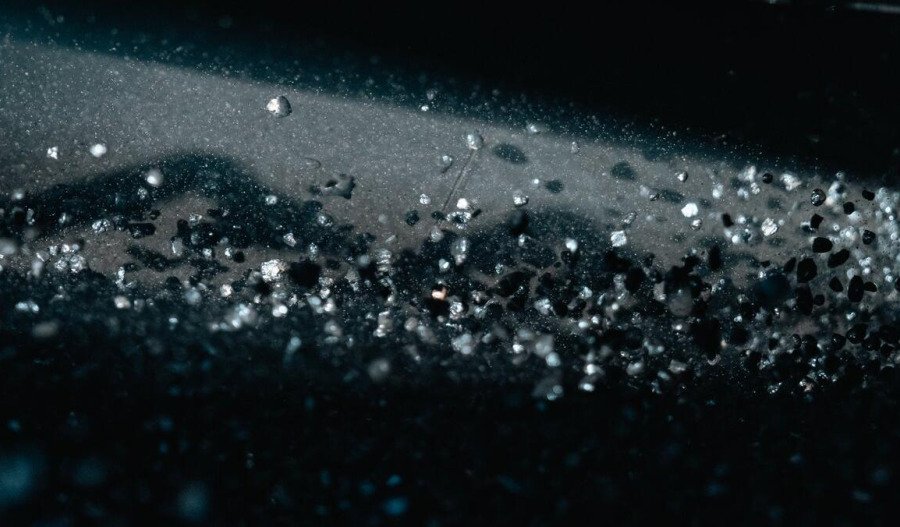The clean energy transition is creating an unprecedented demand surge for critical minerals, however the traditional "take-make-dispose" model is hitting buffers. The Ellen MacArthur Foundation's latest analysis suggests it's time to employ what's called a ‘circular economy’ strategy.
Azzet’s Mission Critical is a weekly column that lays out the ebbs and flows around critical minerals supply chains - from pricing, production, refinement and mergers & acquisitions, to manufacturing and consumer products.
Meeting our global critical minerals supply/demand gap may just require a comprehensive system redesign.
Why? Because the clean energy transition and electrification of the global economy are expected to drive a fivefold or greater increase in demand for critical minerals such as lithium, cobalt, nickel, copper, and rare earth elements by 2040 in some scenarios.
The Ellen MacArthur Foundation's critical minerals report says that while everyone's been obsessing over securing new supply chains, a trillion-dollar opportunity has been hiding in plain sight across existing material flows.
The report makes a compelling case that circular economy strategies could fundamentally reshape how we think about mineral security - not just as a nice-to-have sustainability add-on, but as mission-critical infrastructure for energy transition.
Reality bites
Before diving into circular solutions, understanding the brutal reality of current market dynamics becomes absolutely essential for any strategic planning.
For all four of these critical materials, prices reached record highs in 2022 and subsequently crashed in 2023, with nickel, cobalt, and graphite experiencing price declines of 30-45%, while lithium prices dropped by an enormous 75%.

This volatility extends far beyond giving CFOs nightmares as it actively undermines investment confidence in new project development across the sector.
Price volatility for minerals and metals required for the clean energy transition has become a significant deterrent to private sector mining investment, with the S&P Global Market Intelligence's Pipeline Activity Index dropping 30 percent in March 2024.
Current lithium market conditions perfectly illustrate the fundamental structural problems plaguing the critical minerals sector today.
Daiwa Capital Markets predicts a 12-28% increase in global lithium supply during 2025-2026, driven by rising production in Argentina, Australia, and Africa, but this surge in supply is expected to put downward pressure on lithium prices.
Concentrations
The geographical concentration of critical minerals supply chains has deteriorated significantly rather than improved over recent years.
The average market share of the top three refining nations for key energy minerals rose from around 82% in 2020 to 86% in 2024 as some 90% of supply growth came from the top single suppliers alone: Indonesia for nickel and China for cobalt, lithium, graphite and rare earths.
This dangerous concentration creates massive vulnerabilities that could cripple global clean energy transition efforts almost overnight.
For graphite and REEs, the remaining supplies would cover just 35-40% of N‑1 demand in 2035, thus insufficient to meet demand, whilst for nickel, the ratio would be much lower if battery-grade nickel sulphate supplies (mostly from China) were also disrupted.
Enter: The circular economy
This represents precisely where the Ellen MacArthur Foundation's analysis of a circular economy approach to mineral security challenges comes in, advocating for a complete system redesign.
The circular economy's 'inner-loop' strategies that retain products and materials at high value — such as reuse, refurbishment and sharing — deliver superior economic and efficiency gains, while avoiding logistical complexity and material losses often associated with recycling.

The scale of opportunity presents eye-watering financial potential that dwarfs many traditional mining investment opportunities.
Decommissioning of wind turbines could drive three-fold growth in the turbine scrap market by 2035, valued at ~US$9 billion, but further circular opportunities lie in recirculating parts, rather than recycling scrap.
Unaccounted for end-of-life copper waste alone exceeds 9 million tonnes and could be worth more than $110 billion in 2035 — the equivalent to the annual production of the world's 20 largest copper mines combined.
Recycling is well and truly off to the races
Production of recycled battery metals has recently seen rapid growth, with rates surging to over 40% for nickel and cobalt and to 20% for lithium in 2023, whilst the market value of recycled battery metals experienced nearly 11-fold growth between 2015 and 2023.
The IEA's latest analysis suggests recycling could make a substantial dent in new mining requirements.
In the Announced Pledges Scenario, recycling reduces new mine development needs by 40% for copper and cobalt, and by 25% for lithium and nickel by 2050, with the market value of recycled energy transition minerals growing fivefold, reaching $200 billion by 2050.
It's also an impressive environmental dividend.
Recycled energy transition minerals such as nickel, cobalt and lithium incur 80% less greenhouse gas emissions than primary materials produced from mining.
But here's the challenge: By 2025, Europe's black mass refining capacity will be just 20,000 tonnes — 32 times smaller than China's staggering 650,000 tonnes (t), creating supply chain weakness that risks making Europe dependent on foreign processors for critical battery materials.
Market drivers
The lithium-ion battery recycling market is exploding. It broke the $7.2 billion mark last year and is estimated to grow at a CAGR of >20.6% from 2025 to 2034 - driven by environmental concerns over improper battery disposal and hazardous material leaks.
Crucially, the feedstock is about to surge.
The current volume of lithium-ion batteries available for recycling is relatively small and concentrated on personal and other electronic devices, but this landscape is rapidly changing as early EVs are beginning to reach end-of-life, and we're likely to see an influx of large lithium-ion batteries in coming years.
Policy pushes
Regulation is finally catching up to reality.
According to the IEA's Critical Minerals Policy Tracker, more than 30 new policy measures related to critical mineral recycling have been introduced since 2022.
The EU has mandated recycling targets for battery producers, prescribing minimum requirements for recycled mineral content for batteries of 16% for cobalt, 85% for lead, 6% for lithium and 6% for nickel.
Window of opportunity
The foundation argues that this is a critical moment, as the products, infrastructure, and industrial systems being designed today will define mineral flows for decades.
Designing supply chains using circular economy approaches from the outset will make them easier and more cost-effective to scale and will avoid the ‘lock-in’ of linear models.
Three crucial factors have aligned to create this opportunity:
Tech: Advances in asset tracking, modular design, AI including AI-based sorting, and recycling are making circular solutions more viable and scalable.
Business: Companies are increasingly recognising that circular approaches can reduce material costs, waste management costs, and exposure to volatile commodity markets.
Policy: Governments are finally understanding that product design and material recycling are essential to creating secure, resilient supply chains.
With demand set to grow exponentially whilst supply chains remain dangerously concentrated, the circular economy has evolved from an environmental nice-have into an economic and strategic imperative for critical minerals security.
Those who grasp this opportunity early will find themselves sitting on assets worth hundreds of billions, while competitors remain trapped digging holes in increasingly depleted ground.



